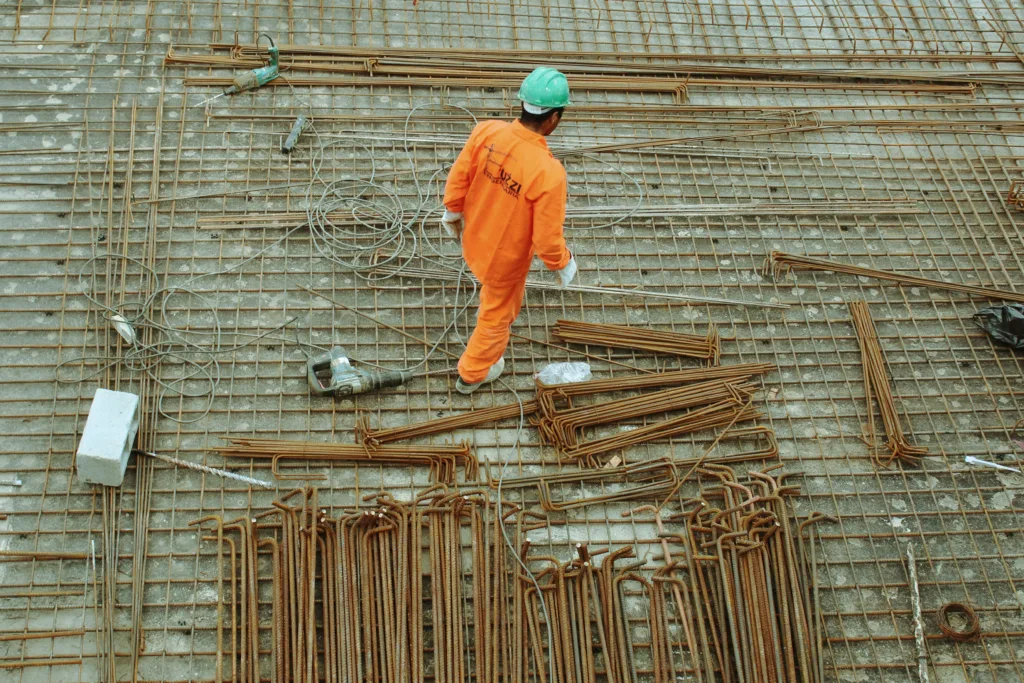In order to safeguard your home and protect it from potential fire hazards, it is crucial to establish a fire-resistant zone around your property. This article will provide you with practical tips and essential guidance on how to effectively create such a protective space. By implementing proper landscaping techniques, selecting fire-resistant materials, and maintaining regular upkeep, you can significantly reduce the risk of a fire damaging your home and ensure the safety of your loved ones and your valuable property. Stay informed and prepared as we guide you through the steps required to establish a fire-resistant zone around your home.
Table of Contents
Assessing the Surroundings
Evaluate the Landscape
Before creating a fire-resistant zone around your home, it is crucial to carefully evaluate the landscape surrounding your property. By assessing the terrain, you can identify potential risks and vulnerabilities, allowing you to develop an effective plan to mitigate fire hazards. Look for any steep slopes or canyons that could accelerate the spread of flames, as well as areas of dense vegetation that could serve as fuel for a fire.
Identify Potential Fire Hazards
Identifying potential fire hazards is another vital step in creating a fire-resistant zone. Walk around your property and look for anything that could ignite easily, such as dry brush, woodpiles, or flammable chemicals. Additionally, be aware of any power lines or transformers near your home, as these can pose a significant fire risk. By recognizing these hazards, you can take the necessary steps to remove or mitigate them, minimizing the likelihood of a fire starting or spreading.
Consider the Topography
Understanding the topography of your property is essential when creating a fire-resistant zone. Evaluating the topography will help you determine the direction a fire is likely to spread and the potential impact it could have on your home. Consider factors such as wind patterns, nearby bodies of water, and natural or man-made barriers that could influence fire behavior. This knowledge will inform your selection of firebreak locations and help you develop a strategic plan to protect your home from wildfire.
Creating Defensible Space
Clear Vegetation Near the Home
Creating defensible space is a critical component of fire prevention. Start by clearing any vegetation, such as shrubs or trees, within 30 feet of your home. This buffer zone helps to reduce the risk of fire spreading to your property. Remove any dead or dry plants that act as fuel for wildfires, as well as any debris that could ignite easily. Keeping this area clear will create a barrier between your home and potential sources of fire, providing an extra layer of protection.
Remove Dead or Dry Plants
To further enhance the defensible space around your home, it is essential to regularly remove dead or dry plants. These plants can easily catch fire and pose a significant risk to your property and safety. Regularly inspect your surroundings and identify any vegetation that is showing signs of decay or drying out. Promptly remove these plants to reduce the fuel load and minimize the potential for ignition during a wildfire.
Trim Overhanging Branches
Overhanging branches can pose a serious threat during a wildfire, as they can allow flames to spread easily from trees to your home. To minimize this risk, trim any branches that are within 10 feet of your house or other structures. This distance ensures that flames do not reach your property even if they ignite nearby vegetation. By keeping branches well-maintained and trimmed, you are taking proactive measures to prevent the spread of fire and safeguard your home.

Planting Strategies
Choose Fire-Resistant Plants
When creating a fire-resistant zone, it is essential to carefully select the plants you incorporate into your landscaping. Opt for fire-resistant plants that are less likely to ignite and contribute to the spread of a wildfire. Examples of fire-resistant plants include succulents, deciduous trees, and ground covers that have a high moisture content. These plants not only add beauty to your landscape but also act as a natural barrier against fire, helping to protect your home.
Maintain Proper Plant Spacing
Maintaining proper spacing between plants is crucial in minimizing the risk of fire spread. Overcrowded vegetation can provide a continuous fuel source for fire, enabling flames to quickly jump from one plant to another. Follow the guidelines for recommended plant spacing to ensure that there is adequate clearance between each plant. This spacing not only helps to deter the spread of flames but also allows for better airflow, reducing the likelihood of plant stress due to overcrowding.
Create a Greenbelt
Creating a greenbelt around your property can significantly enhance its fire resistance. A greenbelt is an area of well-maintained, low-flammability vegetation that acts as a buffer zone between your home and the surrounding landscape. It serves as a defense against the rapid spread of fire and can help to slow down its progress. When planning your greenbelt, include a mixture of fire-resistant plants, grasses, and ground covers to create an effective barrier that reduces the risk of your home being engulfed in flames.
Irrigation and Water Sources
Install Adequate Irrigation Systems
Having adequate irrigation systems in place is crucial for maintaining a fire-resistant zone around your home. Proper hydration of your landscape can help prevent vegetation from drying out and becoming susceptible to fire. Install an efficient irrigation system that covers the entire area of your property. Consider incorporating drip irrigation or sprinklers to ensure that plants receive an adequate amount of water, especially during dry periods when the risk of fire is higher.
Identify Nearby Water Sources
In addition to having an irrigation system, it is essential to identify nearby water sources that can be utilized in an emergency. Locate ponds, rivers, or lakes in close proximity to your property that can serve as a water supply for firefighting purposes. This information will be invaluable should a fire occur, as having access to a readily available water source can help contain and suppress the flames more quickly.
Maintain Water Storage
Maintaining adequate water storage on your property is essential for fire prevention. Regularly check and maintain any existing water storage tanks or reservoirs to ensure they are functioning properly. Keep them filled to capacity and consider installing additional storage options, such as rainwater collection systems or portable tanks. Having sufficient water reserves readily available will provide you with a valuable resource during an emergency and aid in extinguishing flames.

Creating Firebreaks
Clear Firebreaks around Structures
Creating firebreaks around your structures is an effective way to protect them from oncoming wildfires. Firebreaks act as barriers, impeding the progress of flames and reducing the risk of your home catching fire. Clear vegetation and other combustible materials from a wide area around your structures, typically at least 30 feet, leaving bare ground or carefully maintained non-flammable surfaces. This buffer zone helps to slow down or redirect the path of a fire, giving firefighters a better chance of defending your property.
Consider Firebreak Construction Materials
When constructing firebreaks, consider the materials you use to ensure their effectiveness. Opt for non-flammable materials such as gravel, concrete, or bare ground when creating the buffer zone. Choose materials that are low maintenance and require minimal upkeep to ensure the longevity and durability of the firebreak. Avoid using wood chips, bark mulch, or other flammable materials that could ignite during a fire, rendering the firebreak ineffective.
Implement Firebreak Maintenance
Maintaining firebreaks is crucial to their continued effectiveness. Regularly inspect and clear any regrowth or debris that accumulates within the firebreak zones. Remove dried grasses, fallen leaves, or any other flammable materials that could provide fuel for a fire. Additionally, monitor the condition of the firebreaks and make any necessary repairs or improvements. By routinely maintaining the firebreaks, you are helping to ensure their integrity and enhance their ability to protect your property.
Implementing Fire-Resistant Fencing
Select Fire-Resistant Materials
When considering fencing options for your property, prioritize fire-resistant materials that will add an extra layer of protection. Choose materials such as metal, concrete, or composite materials that are less likely to ignite and contribute to the spread of fire. Avoid using wood or other flammable materials for fencing, as they can quickly succumb to flames during a wildfire. Opting for fire-resistant fencing materials can help contain a fire and prevent it from reaching your home.
Properly Install the Fence
Proper installation of fire-resistant fencing is crucial to its effectiveness. Ensure that the fence is securely anchored and constructed according to recommended guidelines. This includes appropriate post spacing, proper attachment of fencing materials, and solid structural integrity. A well-installed and maintained fence can serve as an effective barrier against the flames and ember attacks, reducing the risk of your home being impacted by a wildfire.
Maintain and Inspect the Fence
Regular maintenance and inspection of your fire-resistant fence are essential to ensure its continued functionality. Routinely inspect the fence for any signs of damage or deterioration, such as loose or broken sections. Make necessary repairs promptly to maintain the fence’s integrity and effectiveness. Additionally, clear any vegetation or debris that accumulates along the fence line, as these can become fuel sources during a fire. By regularly maintaining and inspecting the fence, you are maximizing its ability to protect your property from the threat of wildfires.

Outdoor Structures and Equipment
Choose Fire-Resistant Materials for Structures
Selecting fire-resistant materials for outdoor structures is crucial in minimizing fire risk. Opt for materials such as metal, concrete, or composites when constructing or renovating structures such as sheds, pergolas, or decks. These materials are less likely to ignite and contribute to the spread of fire, offering an added layer of protection for your property. Avoid using wood or other flammable materials that can pose a significant risk in the event of a wildfire.
Store Equipment Safely
Proper storage of outdoor equipment and flammable substances is essential in reducing fire hazards. Ensure that fuel containers, propane tanks, or other potentially combustible materials are stored in designated areas away from structures and vegetation. Use approved storage containers and follow all safety guidelines to minimize the risk of ignition. Additionally, keep any outdoor tools or equipment clean and free from debris or flammable substances that could accidentally ignite during use or storage.
Ensure Proper Disposal of Debris
Proper debris disposal is crucial in maintaining a fire-resistant zone. Dispose of yard waste, including fallen leaves, branches, and grass clippings, promptly and appropriately. Do not allow debris to accumulate near buildings or structures, as they can serve as potential fuels during a wildfire. Consider composting or recycling organic waste whenever possible to minimize the need for burning and further reduce the risk of fire.
Home Exterior and Roof
Use Fire-Resistant Building Materials
Choosing fire-resistant building materials for your home’s exterior is essential in enhancing its fire resistance. Opt for materials such as stucco, brick, or cement fiberboard that are less likely to ignite or contribute to the spread of fire. Avoid using wood or vinyl siding, which are more flammable and can quickly ignite during a wildfire. By opting for fire-resistant building materials, you are adding an extra layer of protection to your home’s outer structure.
Maintain the Exterior
Regular maintenance of your home’s exterior is crucial to its fire resistance. Inspect the exterior walls, windows, and doors regularly for any signs of damage, such as cracks or gaps. Repair any vulnerabilities promptly to prevent embers from entering the home during a fire. Additionally, keep the exterior surfaces clean and free from debris, as accumulations of flammable materials can pose a significant fire risk. By maintaining the exterior, you can ensure that your home remains well-protected against the threat of wildfires.
Clear Debris from Roofs
Clearing debris from roofs is a vital step in reducing fire hazards. Remove any accumulated leaves, pine needles, or other flammable materials from your roof regularly. These materials can easily ignite during a fire, especially when accompanied by strong winds or flying embers. Additionally, trim any overhanging branches that could potentially touch or damage the roof. By keeping your roof free of debris, you are minimizing the risk of fire ignition and protecting one of the most vulnerable areas of your home.

Considerations for Windows and Vents
Install Heat-Resistant Glazing on Windows
Installing heat-resistant glazing on windows can significantly improve your home’s fire resistance. Heat-resistant glazing is designed to withstand high temperatures without shattering, making it more difficult for flames or embers to penetrate the home through broken windows. Consider replacing single-pane windows with double- or triple-pane windows featuring laminated or tempered glass. This upgrade provides an extra layer of protection against the radiant heat generated by wildfires.
Utilize Mesh Screens for Vents
Ventilation is crucial for a comfortable home environment, but vents can also be entry points for embers during a wildfire. To prevent this, install mesh screens over all vents, including those on the roof, eaves, and foundation. The mesh screens act as a barrier, preventing embers from entering the ventilation system and potentially igniting the interior of your home. Regularly inspect and clean the screens to ensure they are free from debris that could hinder their effectiveness.
Seal Gaps and Crevices
Sealing gaps and crevices is an important step in creating a fire-resistant home. Inspect the exterior of your home for any gaps or openings in the siding, eaves, or other structural components. Seal these gaps using fire-resistant caulking or other appropriate materials to prevent embers from entering the building. Additionally, ensure that all doors and windows have proper weather stripping to minimize the potential for embers to infiltrate your home. By sealing gaps and crevices, you are enhancing your home’s defense against the intrusion of fire.
Emergency Preparedness
Create an Emergency Plan
Creating an emergency plan is essential to protect yourself and your family during a wildfire. Develop a detailed plan that outlines evacuation routes, meeting points, and communication strategies. Ensure that all family members are aware of the plan and know how to react in the event of a wildfire. Practice drills regularly to familiarize everyone with the procedures and to identify any areas that may need improvement. By having a well-thought-out emergency plan, you can greatly increase your chances of safely navigating a wildfire situation.
Implement Early Warning Systems
Early warning systems are a crucial component of wildfire preparedness. Install smoke detectors in every room of your home, ensuring they are in proper working order and have fresh batteries. Consider investing in a monitored fire alarm system that can alert local authorities in the event of a fire. Additionally, sign up for emergency notifications in your area, such as text alerts or smartphone apps, to stay informed about any wildfire-related updates. By implementing early warning systems, you are providing yourself with valuable time to take necessary actions and protect your life and property.
Prepare Firefighting Tools and Equipment
Having firefighting tools and equipment readily available can make a significant difference in combating small fires and protecting your property until emergency responders arrive. Equip yourself with essentials such as fire extinguishers, hoses, and shovels. Familiarize yourself with how to use these tools effectively and ensure they are easily accessible in case of an emergency. Additionally, create a designated safe area to store these firefighting tools, making sure it is free from flammable materials and easily accessible. By preparing your firefighting resources, you are taking proactive measures to safeguard your home and property during a wildfire.
In conclusion, creating a fire-resistant zone around your home is crucial in protecting your property and ensuring your safety during a wildfire. By carefully evaluating the landscape, identifying potential fire hazards, and considering the topography, you can develop a comprehensive plan to mitigate fire risks. Creating defensible space, implementing firebreaks, utilizing fire-resistant materials, and maintaining proper irrigation are all essential components of a fire-resistant zone. By taking these measures and incorporating emergency preparedness strategies, you can greatly enhance your home’s defense against wildfires and minimize the potential impact on your life and property.


